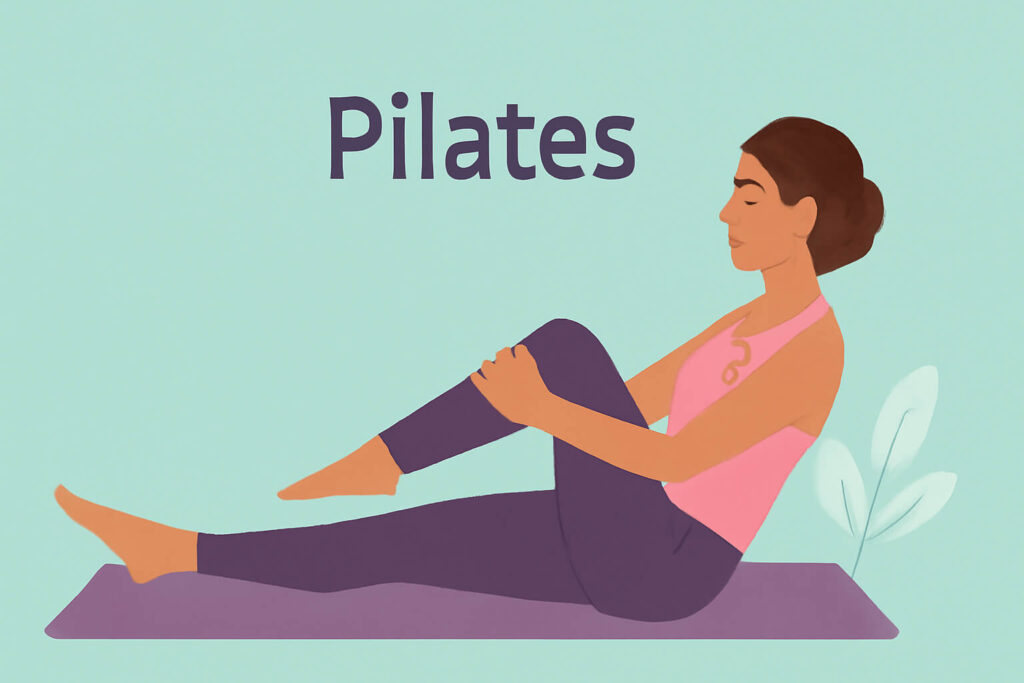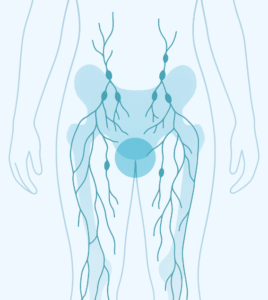Embark on a journey to discover how Pilates can be a transformative ally in the recovery process for breast cancer survivors and those managing lymphedema. This exploration unveils the surprising benefits of Pilates, offering insights into how this mindful movement practice can enhance the quality of life and promote physical well-being. This article will serve as a comprehensive guide, providing valuable information and practical advice for incorporating Pilates into a recovery program.
Understanding Lymphedema and Breast Cancer
What is Lymphedema?
Lymphedema is a chronic condition characterized by swelling, most commonly in the arms or legs, caused by a blockage in the lymphatic system. This system, crucial for immune function, normally drains lymph fluid. When the lymph flow is obstructed, fluid accumulates, leading to swelling and discomfort. This condition affects the quality of life of many and needs to be addressed. Understanding lymphedema is the first step toward effective management and improved well-being for affected individuals.
How Breast Cancer Treatment Can Lead to Lymphedema
Breast cancer treatment, including surgery and radiation, can disrupt the lymphatic system, increasing the risk of breast cancer-related lymphedema. Surgical removal of lymph nodes or radiation therapy can damage the lymph vessels, impairing their ability to drain lymph fluid effectively. As a result, cancer patients are vulnerable to developing lymphedema. Careful monitoring and proactive management are crucial to minimize the risk of lymphedema after breast cancer treatment.
The Importance of Recovery for Cancer Survivors
Recovery after breast cancer treatment is a multifaceted process encompassing physical, emotional, and psychological well-being. Cancer survivors often face challenges like fatigue, pain, and decreased mobility, impacting their quality of life. An effective recovery plan addresses these challenges through exercise programs that enhance strength and resilience. Prioritizing recovery empowers breast cancer survivors to regain control over their health and rebuild their lives.
Exploring Pilates as an Effective Exercise
What is Pilates?
Pilates is a low-impact exercise program that focuses on strengthening core muscles, improving flexibility, and enhancing body awareness. Developed by Joseph Pilates, this method emphasizes precise movements and controlled breathing exercises to promote physical and mental well-being. Pilates engages the whole body, fostering balance and coordination. The principles of Pilates make it a versatile and accessible form of exercise for individuals of all fitness levels.
How Pilates Differs from Other Exercises
Unlike some other exercise regimens that prioritize high-intensity workouts, Pilates emphasizes controlled movements and mindful engagement of core muscles. While resistance exercise and cardiovascular exercises build strength and endurance, Pilates focuses on enhancing body awareness, improving posture, and fostering a deeper connection between mind and body. This approach makes Pilates a unique and beneficial option for individuals seeking a holistic approach to fitness.
Principles of Clinical Pilates
Clinical Pilates is an adaptation of the traditional Pilates method tailored to address specific health conditions, often involving patients with lymphedema. It incorporates the core principles of Pilates with modifications and adaptations to suit individual needs and limitations. Clinical Pilates emphasizes safe and effective movements, guided by trained professionals, to promote rehabilitation and improve functional abilities. The approach ensures that the benefits of Pilates can be maximized for cancer patients and breast cancer survivors.
Benefits of Pilates for Cancer Patients
Physical Benefits of Pilates for Breast Cancer Survivors
The physical benefits of Pilates for breast cancer survivors are numerous. A tailored exercise program, like Pilates, can improve range of motion, reduce lymphedema, and alleviate pain often associated with breast cancer treatment. By strengthening core muscles and enhancing flexibility, Pilates helps survivors regain physical function and improve their overall quality of life. The low-impact nature of Pilates makes it a safe and effective exercise option for those recovering from breast cancer.
Emotional and Psychological Advantages
Beyond the physical benefits, Pilates offers significant emotional and psychological advantages for cancer patients. Engaging in Pilates can reduce stress, anxiety, and depression, fostering a sense of well-being. The mind-body connection cultivated through Pilates promotes relaxation and enhances self-esteem, empowering breast cancer survivors to cope with the emotional challenges of recovery. The focus on breathing exercises further supports mental clarity and emotional balance for breast cancer survivors.
Surprising Benefits of Pilates in Recovery
The surprising benefits of Pilates extend beyond conventional expectations in breast cancer recovery. Pilates can improve sleep quality, reduce fatigue, and enhance energy levels, addressing common side effects of cancer treatment. Moreover, Pilates can boost confidence and body image, empowering breast cancer survivors to reconnect with their bodies in a positive way. These unexpected advantages underscore the holistic impact of Pilates in promoting comprehensive recovery for cancer patients and breast cancer survivors.
Research Supporting Pilates in Lymphedema Management
Overview of Relevant Clinical Trials
Research increasingly supports the role of Pilates in lymphedema management. Several clinical trials have investigated the effects of clinical Pilates on reducing swelling, improving lymphatic drainage, and enhancing quality of life for patients with lymphedema. These studies often compare Pilates to other forms of exercise or standard care, providing evidence-based insights into its effectiveness. An overview of these clinical trials highlights the growing recognition of Pilates as a valuable tool in lymphedema management.
Findings from Randomized Controlled Trials
Findings from randomized controlled trials provide compelling evidence of the benefits of Pilates for individuals with lymphedema. These rigorous studies often demonstrate that a clinical Pilates group experiences significant reductions in limb volume, improved lymphatic function, and enhanced quality of life compared to control groups. The data from these trials suggests that incorporating Pilates into a comprehensive lymphedema management plan can lead to meaningful improvements for cancer patients and breast cancer survivors.
Case Studies of Cancer Patients
Case studies offer real-world examples of how Pilates can positively impact cancer patients with lymphedema. These accounts often describe individuals who experienced a significant reduction in the severity of lymphedema, improved mobility, and enhanced overall well-being after incorporating Pilates into their routine. These case studies illustrate the practical benefits of Pilates in managing lymphedema. The patients with lymphedema can find hope from such examples of breast cancer-related lymphedema improvements.
Implementing Pilates in Your Recovery Journey
How to Get Started with Pilates
Embarking on Pilates requires careful consideration, especially for breast cancer survivors and patients with lymphedema. Begin by consulting with your healthcare provider or physical therapist to assess your fitness level and discuss any specific limitations or precautions related to your condition. This initial step ensures that the exercise program is safe and appropriate for your individual needs, maximizing the benefits of Pilates while minimizing potential risks related to lymphedema after breast cancer treatment.
Finding a Qualified Pilates Instructor
Finding a qualified Pilates instructor is crucial for ensuring a safe and effective exercise experience, especially for breast cancer survivors managing lymphedema. Look for instructors who are certified in clinical Pilates or have experience working with cancer patients and patients with lymphedema. A knowledgeable instructor can tailor the Pilates to address your specific needs, providing modifications and guidance to optimize the benefits of Pilates and minimize risks.
Creating a Personalized Pilates Routine
Creating a personalized Pilates routine is essential for maximizing the benefits of Pilates and addressing individual needs of breast cancer survivors. Work closely with a qualified instructor to design an exercise program that considers your fitness level, lymphedema symptoms, and any other health concerns related to breast cancer. A tailored routine may include specific breathing exercises and movements that promote lymphatic drainage, reduce lymphedema, and improve overall quality of life.
Practical Tips for Managing Lymphedema with Pilates
Exercises to Reduce Lymphedema
Specific Pilates can be particularly effective in helping to reduce lymphedema. Focus on movements that encourage lymphatic drainage, such as gentle stretching, range-of-motion exercises, and diaphragmatic breathing exercises. Incorporate exercises that target the affected limb or area, promoting circulation and reducing swelling. Remember to perform these exercises slowly and mindfully, paying attention to your body’s response to ensure safety and effectiveness of the Pilates program. The benefits of Pilates are various.
Integrating Pilates with Other Therapies
Integrating Pilates with other therapies can enhance the effectiveness of lymphedema management and the effects of clinical Pilates. Combine Pilates with manual lymphatic drainage, compression therapy, and other prescribed treatments to optimize lymphatic function and reduce swelling. This holistic approach ensures that you are addressing lymphedema from multiple angles, maximizing your chances of achieving lasting relief and improved quality of life after breast cancer-related lymphedema development. The clinical trial might suggest what combination of therapies can be used.
Monitoring Your Progress
Monitoring your progress is essential for assessing the effectiveness of your Pilates program and making necessary adjustments. Keep track of your symptoms, such as swelling, pain, and range of motion, and note any changes or improvements over time. Regular communication with your healthcare provider and Pilates instructor will allow you to fine-tune your routine and ensure that you are maximizing the benefits of Pilates while minimizing potential risks related to breast cancer survivors management and the severity of lymphedema.
Conclusion and Final Thoughts
Recap of Key Points
In summary, we’ve explored how Pilates can be a valuable tool for breast cancer survivors and those managing lymphedema. We’ve highlighted the physical, emotional, and psychological benefits of Pilates, including improved range of motion, reduced stress, and enhanced body awareness. The research supporting Pilates in lymphedema management has also been examined, along with practical tips for implementing Pilates into a recovery journey, helping cancer patients and breast cancer survivors improve their quality of life.
Encouragement for Cancer Survivors
To all cancer survivors embarking on this journey, remember that recovery is a process, and every step forward is a victory. Embrace the power of Pilates to reclaim your physical and emotional well-being. Trust in your strength, resilience, and ability to heal. With patience, dedication, and the right support, you can overcome challenges and thrive. The benefits of Pilates can assist you through this difficult journey and assist in reducing lymphedema.
Next Steps in Your Pilates Journey
Ready to take the next step? Consult with your healthcare provider to create a personalized exercise program and find a qualified Pilates instructor experienced in working with breast cancer survivors and patients with lymphedema. Commit to regular Pilates sessions, monitor your progress, and celebrate your achievements along the way. Embrace Pilates as a sustainable practice that empowers you to live a healthier, happier, and more fulfilling life, especially after cancer treatment.
FAQs about Pilates, Lymphedema, and Breast Cancer Recovery
What type of Pilates is best for lymphedema?
Clinical Pilates, adapted to address specific health conditions, is often recommended for patients with lymphedema. This approach emphasizes safe and effective movements, guided by trained professionals, to promote lymphatic drainage and reduce swelling. Focus on exercises that incorporate gentle stretching, range-of-motion movements, and diaphragmatic breathing exercises to maximize the benefits of Pilates and avoid any potential harm for cancer patients with breast cancer-related lymphedema.
How often should I practice Pilates for recovery?
The frequency of Pilates for recovery depends on individual needs and fitness levels, but aim for at least two to three sessions per week to experience the full benefits of Pilates. Consistency is key to improving strength, flexibility, and lymphatic function. However, listen to your body and adjust the intensity and duration of your program as needed, especially if you are managing lymphedema after breast cancer treatment. It is recommended to consult with a specialist.
Are there any risks associated with Pilates for cancer patients?
While Pilates is generally safe, some risks may be associated with clinical Pilates for cancer patients, particularly those with lymphedema. It’s essential to avoid overexertion, excessive strain, or movements that cause pain or discomfort. Always consult with your healthcare provider and a qualified Pilates instructor to ensure that the exercises are appropriate for your condition and to learn proper techniques to minimize the risk of injury after breast cancer-related lymphedema development.
Can Pilates help prevent lymphedema?
While more research is needed, some evidence suggests that Pilates may help prevent or reduce the risk of lymphedema after breast cancer treatment. By promoting lymphatic drainage, improving circulation, and strengthening supporting muscles, Pilates may enhance lymphatic function and minimize fluid accumulation. Incorporating clinical Pilates into a comprehensive recovery plan could be a proactive step in managing lymphedema risk for cancer patients and breast cancer survivors.
Where can I find more resources on Pilates and cancer recovery?
Numerous resources are available to learn more about Pilates and cancer recovery. When looking for information, you can explore options like:
- Reputable organizations that offer educational materials, workshops, and certified instructor directories.
- Online resources, such as medical websites and patient forums, that can offer additional insights and support for breast cancer survivors exploring the benefits of Pilates.
Your healthcare provider, physical therapist, or cancer support group can also provide valuable information and recommendations.





